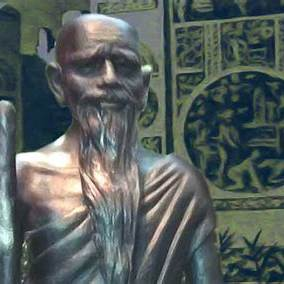Fa-Hien, also known as Faxian, was a Chinese Buddhist monk who embarked on a significant pilgrimage to India in the early 5th century CE. His journey, undertaken between 399 and 414 CE, was primarily motivated by his desire to obtain authentic Buddhist scriptures and to study the practices of Buddhism in its land of origin.
Fa-Hien traveled extensively, covering vast distances over a period of approximately 15 years. He entered India from the northwest, traversing regions that are now part of modern-day Afghanistan and Pakistan, before reaching the Indian subcontinent.
During his stay in India, Fa-Hien visited several significant Buddhist sites, including Kapilvastu (Lumbini), Bodh Gaya, Varanasi (Benares), Shravasti, and Kushinagar. These locations are closely associated with the life and teachings of Siddhartha Gautama, the Buddha.
Fa-Hien’s writings offer valuable insights into the social, cultural, and religious conditions of India during the Gupta Empire. He observed the prevalence of vegetarianism, non-violence, and the caste system. His accounts also highlight the existence of multiple religions, including Vaishnavism, Shaivism, Shaktism, Buddhism, and Jainism.
Upon his return to China, Fa-Hien translated the Sanskrit Buddhist texts he had collected into Chinese, thereby facilitating the spread of Buddhist teachings in East Asia.
Fa-Hien’s journey is considered one of the earliest recorded pilgrimages from China to India, and his detailed accounts provide a window into the historical and cultural exchanges between the two civilizations during that period.







